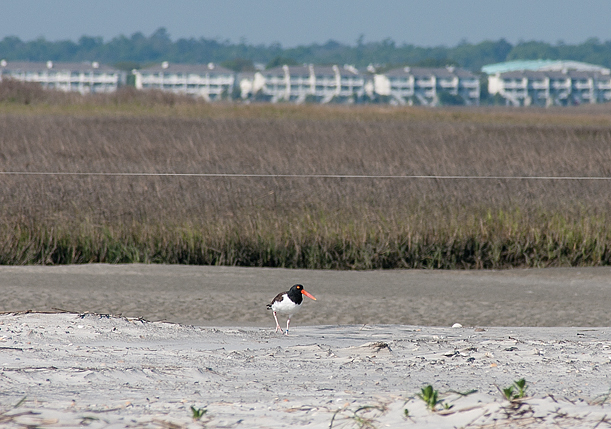More than 10 years after Masons Inlet was first relocated, New Hanover County is working with project partners to shed some project requirements and secure flexibility for the county’s project management.
The first inlet relocation in North Carolina when the permit was issued, the original permit outlined rigorous management requirements. Because the relocation project has proven itself a success since 2002, when the inlet was shifted 3,000 feet north to protect public, residential and commercial property on the northern tip of Wrightsville Beach, county shore protection coordinator Layton Bedsole said he hopes to secure approval for the recently requested changes under review by state and federal agencies.
“Someone had to be first. The north end of Wrightsville Beach was in a very, very precarious situation. There were significant resources at risk, and an approach that was vetted through dozens of public and private entities was developed and implemented,” Bedsole said. “Fifteen years later, the results of that hard work by all those folks are apparent. That should be recognized and acknowledged.”
The changes would alleviate the county’s formal responsibility to gather data about shorebirds nesting in the Mason Inlet Waterbird Management Area, created to offset potential habitat lost by the inlet relocation; subject the county to a less stringent, more cooperative review process each time the inlet moves far enough from its prescribed corridor to trigger a maintenance event; and eliminate a cap of nine total maintenance events allowed in the 30-year permit.
The county’s request for relief from bird nest monitoring at the north end bird management area was passed on to the U.S. Fish and Wildlife Service for review in October 2014. Bedsole said he requested the changes because monitoring data from 2002 to 2013 suggests the project has not adversely affected birds nesting or using the area.
Kathy Matthews, U.S. Fish and Wildlife Service biologist working on the new biological opinion that will determine what efforts will be required of the county, agreed that original requirements — which included counting nests and eggs all along both Wrightsville Beach and Figure Eight Island — were demanding. Matthews expects the new biological opinion, of which the details are still being finalized, will call on the county to continue a less rigorous monitoring program confined to the area adjacent to the inlet on both islands.
Since the Masons Inlet project, other inlet relocation projects have been approved in North Carolina, Matthews said, and the new monitoring requirements will be similar to what is performed for those projects.
“We’re trying to be consistent with these projects, just to make sure we are documenting if there are any impacts to the species after the projects,” Matthews said. The piping plover is the main species of concern, Matthews said, although the red knot is also a considered species.
Bird nesting can begin as soon as mid-March, Matthews said, with birds beginning to lay claim to territory, so bird management areas must be maintained March 1 through Aug. 31. The county was not required to count nests or eggs laid during the 2014 nesting season while a new, more permanent posting around the area’s perimeter was established and plans to formally request relief from monitoring were underway. Matthews said she was unsure if the county would be required to monitor this year, but if so, it would likely entail getting a general idea of how many nesting pairs and nests are located in the area.
Even though the county requested relief from monitoring, Bedsole said the county could voluntarily continue to keep an eye on bird activity in the area.
“I don’t mind monitoring. I don’t mind counting birds. But it shouldn’t be a permit stipulation. At this point, the project has proven it shouldn’t be a regulatory mandate,” Bedsole said.
George Melita, co-chair of the Mason Inlet Preservation Group, the collection of more than 1,000 property owners on the north end of Wrightsville Beach and Figure Eight Island who pay all project costs through county tax assessments, agreed that while observation of the area should continue, the permit should not require it.
“It’s been more than 10 years, and we’ve had a very, very stable ecosystem as far as wildlife and plant life, and the species that are native to the area have done very well. I don’t think it should be ignored, but I think it would be feasible to remove that as a permit requirement,” Melita said.
The U.S. Fish and Wildlife Service is likely to request more time to finish the biological opinion, originally slated for completion by March 21, Matthews said, to incorporate more data on Figure Eight Island bird nesting.
Figure Eight Island, which has historically used sand dredged from Masons Inlet for beach renourishment, could be subject to sea turtle nesting requirements under the new biological opinion, Matthews said.
Part two of this series continues March 12 covering requested changes to the frequency and amount of maintenance events.
email [email protected]




